15 years one-stop China custom CNC machining parts factory
Home / Product / Aluminum Parts /
As your aluminum CNC machining manufacturer, we have 40+ aluminum alloy materials, 100 CNC machining equipment, and 12 quality inspection processes. can provide you with a solution tailored to your specific needs.
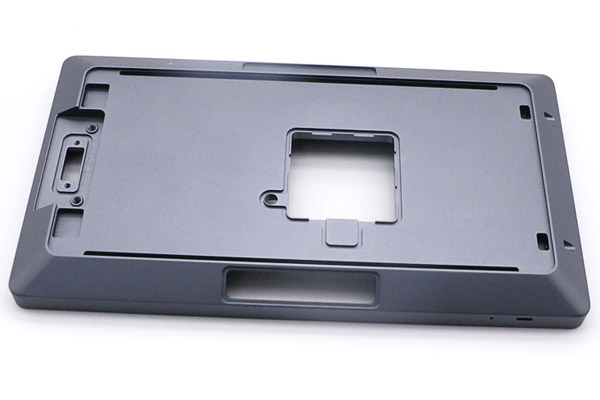
Product Specification:
13 years |
1 day |
0 pc |
90% |
|
Experience |
Lead time |
MOQ |
Countries customers |
| Custom Aluminum Sandblasting Anodizing CNC Machining Parts Precision Machining - OEM ODM CNC Milling Services Manufacturer - China VMT |
Custom Aluminum Sandblasting Anodizing CNC Machining Parts Services
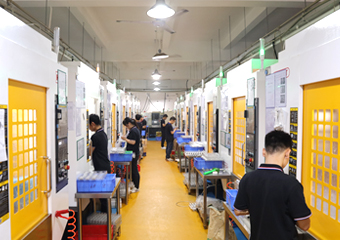
Custom CNC Aluminum Sandblasting Anodizing CNC Machining Parts Prototyping Machining
100 CNC machining equipment provide you with prototype manufacturing, evaluation, design and testing. We can complete CNC machining and delivery of aluminum sandblasting anodizing CNC machining parts prototype parts according to your specific requirements within 1 day. |
|
|
|
|
||
Custom CNC Aluminum Sandblasting Anodizing CNC Machining Parts Surface Treatment |
Custom CNC Aluminum Sandblasting Anodizing CNC Machining Parts Material |
||
|
Our own material library can provide you with special materials such as stainless steel, brass, copper, aluminum, etc., with material testing reports attached. There are professional CNC aluminum sandblasting anodizing CNC machining parts machining project engineers to choose the right materials for you. |
We can provide a variety of surface treatment services based on your Custom CNC aluminum sandblasting anodizing CNC machining parts machining project: polishing, anodizing, powder coating, laser engraving, custom graphics, etc. 12 quality inspection processes ensure that your CNC machined parts have a yield rate of 98%. |
| Still selecting materials for your custom aluminum sandblasting anodizing CNC machining parts? Different materials have different properties, and you can customize the aluminum sandblasting anodizing CNC machining parts to your liking. Here are some common materials used in manufacturing metal aluminum sandblasting anodizing CNC machining parts: |
|
|
|
||
|
|
|
12 Quality Inspection Processes
| Refined production standards, providing you with precision parts with a pass rate of up to 98% |
|
|
|
|
||
| DFM Analysis | Dimensional Tolerance | Material Testing | ||
|
|
|
|
||
| CNC Machining | FQC detection | SPC / CKP | ||
|
|
|
|
||
| Problem Found | Problem Solving | OQC Detection | ||
|
|
|
|
||
| Surface Treatment | Full Inspection | Package |
| The following is the manufacturing process of customized aluminum sandblasting anodizing CNC machining parts. Due to the need to protect the rights and interests of customers, the following picture is not the manufacturing process of this part and is for reference only: |
 |
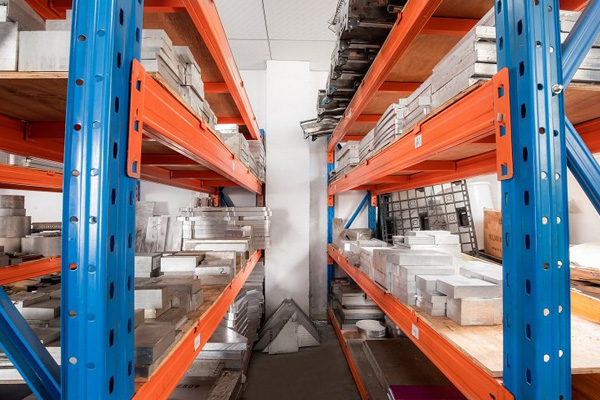 |
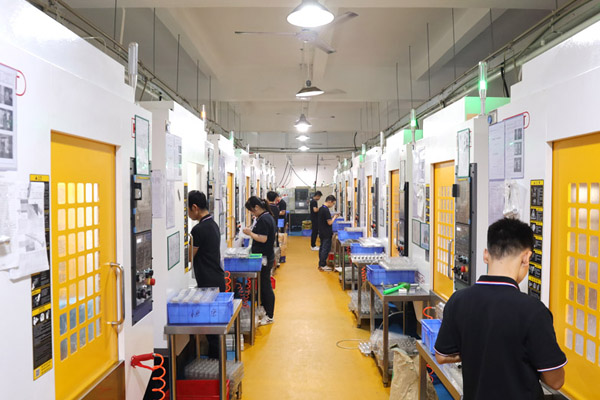 |
||
| DFM Analysis | Material | CNC Machining | ||
|
|
|
 |
||
| Surface Treatment | Quality Inspection | Package |
|
Quality Testing Equipment |
|
|
|
|
||
|
|
|
|
||
|
|
|
|
Custom Aluminum Sandblasting Anodizing CNC Machining Parts Quality Assurance
|
Quality inspection reports are an important tool to ensure the quality and precision of your CNC machining work. We can provide a comprehensive overview of the finished product with a detailed test report on material and product performance, either from an in-house auditor or a third-party laboratory. Ensure finished product meets all customer requirements. |
|
Qualify Evaluation Report
For each order we receive, we can provide a list of quality inspection reports according to your processing requirements.
Inspection report
Certificate
ISO 9001:2015 IATF 16949:2015 ROHS Directive 12 patent certifications
|
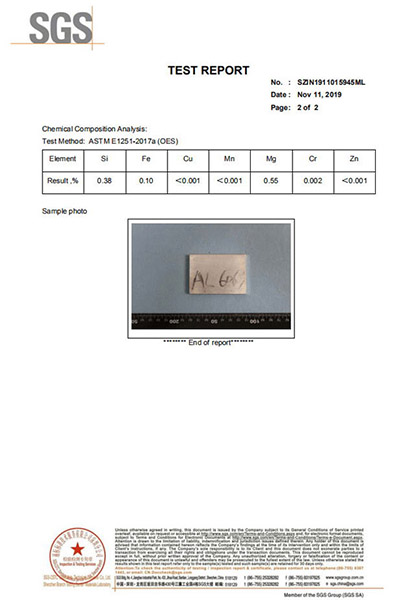 |
|
|
Custom Aluminum Sandblasting Anodizing CNC Machining Parts FAQs
|
1. What is CNC machining, and how is it used for aluminum parts?
CNC (Computer Numerical Control) machining is a precision manufacturing process where machines are programmed to cut, shape, and form materials like aluminum based on a digital design. It allows for the production of high-precision, custom aluminum parts with tight tolerances and complex geometries. After machining, aluminum parts can undergo treatments like sandblasting and anodizing to enhance both functionality and appearance.
2. What is sandblasting, and why is it used on aluminum CNC parts?
Sandblasting is a surface finishing process that involves propelling abrasive particles (like sand or glass beads) at the surface of aluminum parts to remove imperfections, create a uniform matte texture, and improve surface adhesion for subsequent finishes like anodizing. It enhances the part’s appearance by providing a clean, consistent surface.
3. What is anodizing, and why is it applied after sandblasting CNC-machined aluminum parts?
Anodizing is an electrochemical process that thickens the natural oxide layer on the surface of aluminum parts, providing enhanced corrosion resistance, wear resistance, and the ability to add color. Anodizing is commonly applied after sandblasting to protect the uniform matte surface while also improving durability and aesthetics.
4. Can custom designs be applied to CNC-machined aluminum parts that undergo sandblasting and anodizing?
Yes, CNC machining allows for fully customized designs with complex geometries, features like grooves, threads, holes, and engravings. After machining, the parts can be sandblasted to create a smooth, matte surface, followed by anodizing to add a protective layer and color.
5. What surface finishes are achievable with sandblasting and anodizing CNC aluminum parts?
6. What tolerances can be achieved for sandblasted and anodized CNC-machined aluminum parts?
CNC machining can achieve tight tolerances, typically within ±0.01 mm or better. However, the processes of sandblasting and anodizing add layers that slightly change the final dimensions. The anodized layer is typically 5 to 50 microns thick, and this should be considered when specifying tolerances.
7. How durable are CNC-machined aluminum parts after sandblasting and anodizing?
Aluminum parts that have been sandblasted and anodized are highly durable. Sandblasting removes surface imperfections, while anodizing adds a protective layer that increases wear resistance, corrosion resistance, and surface hardness. The anodized layer also protects against UV radiation and scratches, extending the life of the part.
8. Can prototypes be made before full production of sandblasted and anodized CNC aluminum parts?
Yes, CNC machining services often offer prototyping. You can create a prototype to test the design, fit, and surface finish (both sandblasting and anodizing) before moving into full-scale production. This ensures the part meets all aesthetic and functional requirements.
9. What information should be provided to get a quote for custom CNC aluminum sandblasted and anodized parts?
To get an accurate quote, provide: CAD drawings or detailed design files with specific dimensions and features. Material specifications, including the type of aluminum alloy (e.g., 6061, 7075). Surface finish preferences, including sandblasting texture and anodizing color. Quantity required for production. Any specific requirements such as tolerances, mounting holes, or threaded features.
10. What are the benefits of combining sandblasting and anodizing for CNC aluminum parts?
11. What are the limitations of sandblasting and anodizing CNC aluminum parts?
12. What is the typical lead time for custom CNC aluminum sandblasted and anodized parts?
Lead times vary based on the complexity of the design, the order quantity, and the specific surface treatments required. Typically, the lead time ranges from 2 to 6 weeks after the design is finalized. Prototypes or small batches may be produced faster, usually within 1 to 2 weeks. |
| We hope these CNC metal aluminum sandblasting anodizing CNC machining parts faqs answer your questions. If you have more questions or require further assistance, please feel free to contact our dedicated customer support team. We're here to help you build the perfect custom CNC aluminum sandblasting anodizing CNC machining parts just for you. |
Contact Us
 Related suggestion
Related suggestionGive us a call or send an inquiry to our emailbox, we will answer your doubts according to your customers' requirements, and quote you immediately.
